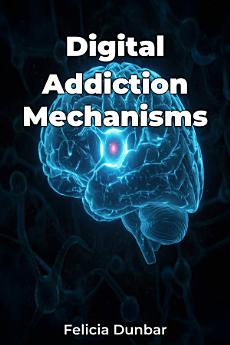Digital Addiction Mechanisms
About this ebook
It begins by defining digital addiction and diagnostic criteria, then explores neurological correlates through brain imaging studies, identifying key brain regions like the prefrontal cortex and striatum. Later chapters delve into psychological factors, such as cognitive biases and coping mechanisms, and finally analyzes intervention strategies like cognitive-behavioral therapy (CBT) and neurofeedback.
This comprehensive approach is valuable for psychologists, neuroscientists, educators, and medical professionals seeking to understand and address digital addiction. The insights in ""Digital Addiction Mechanisms"" can be applied in clinical, educational, and family settings to promote healthy gaming habits and effective intervention strategies.








